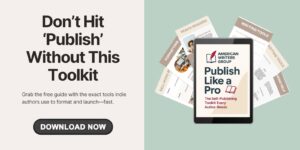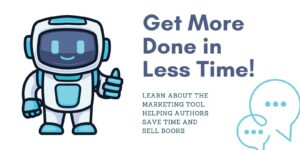Got a Story to Teach, Share, or Inspire? Let’s Turn It Into a Book
If you’re here, chances are you’ve lived through something worth sharing—or you have knowledge that could help others. That’s what nonfiction is all about.
Whether you want to write a self-help book, a how-to guide, a memoir, or something that blends them all, writing nonfiction isn’t just for professors or “experts.” You don’t need perfect grammar, a fancy degree, or a big following to start.
You just need to begin—and we’re here to make that feel a whole lot easier.
This guide will walk you through how to write, polish, and self-publish a nonfiction book that actually helps people (and maybe even earns you some extra income).
Heads up: This post includes a few affiliate links. If you decide to buy through them, we may earn a small commission—at no extra cost to you. We only recommend tools we trust.
Step 1: Know Who You’re Writing For
Before you write a single page, ask: Who is this book for?
Are you writing for…
- Busy parents who need quick advice?
- Small business owners trying to grow?
- People dealing with grief, change, or a big life moment?
Your readers don’t need a textbook. They need your voice, your experience, and your honest advice. Keep it simple, clear, and helpful.
Step 2: Make a Quick Outline (Don’t Overthink It)
Nonfiction books don’t have to follow a strict format—but they do need structure. Don’t worry about chapter names yet. Just jot down the big ideas or steps your book will cover.
Example:
If you’re writing a book about getting organized, your outline might look like:
- Why staying organized is hard
- Common mistakes
- Easy habits to try
- Tools that help
- A simple 7-day plan
You can brainstorm in Canva Whiteboards, a notebook, or even your phone. The goal is to get your ideas out so writing is easier.
Step 3: Write Like You Talk
You don’t need to “sound like an author.” Just be real. The best nonfiction books feel like a helpful conversation, not a lecture.
Tips to keep it easy:
- Use short paragraphs and clear sentences
- Don’t use big words if small ones work
- Imagine talking to one person, not a crowd
Need help getting words on the page? Try Otter.ai to speak your draft out loud.
Step 4: Edit Without Over-Editing
First drafts are supposed to be messy. Once you’ve finished writing, take a short break—then come back and clean it up.
Free editing tools to try:
- Grammarly – great for spelling and grammar
- Hemingway App – helps make your writing easier to read
Once it feels solid, you can hire a nonfiction editor on Fiverr or Reedsy to polish it up before publishing.
Step 5: Get Ready to Self-Publish
You don’t need a publisher to share your message. With self-publishing, you can:
- Format your book using Atticus or Vellum
- Design a cover with Fiverr or Canva
- Publish to Amazon KDP or distribute everywhere with Draft2Digital
Bonus Tips for Nonfiction Authors
✅ Add stories: Readers love real-life examples
✅ Keep chapters short: Makes your book easier to read
✅ Use subheadings and bullet points: Helps people find what they need fast
✅ Include extras: Worksheets, links, or a bonus chapter can boost value

Want Some Help Along the Way?
🎁 Download our free guide: Publish Like a Pro Toolkit
It’s filled with checklists and tips to help you publish your nonfiction book faster, smarter, and with less stress.
📘 Need step-by-step help?
Grab our Author’s Quickstart Blueprint—an affordable mini-course to help you plan, write, and publish your book on your own terms.
👉 Get it here for a limited time 74% off discount
💼 Add the Author Toolbox Templates for only $17 more at checkout. These include nonfiction-friendly checklists, templates, book launch emails, and more.
Final Thoughts
Writing a nonfiction book can open doors—for your career, your message, or your legacy. You don’t need to have it all figured out to start. You just need a plan and some support.
One page at a time. That’s how books (and dreams) get done.
We’re here if you need us.






